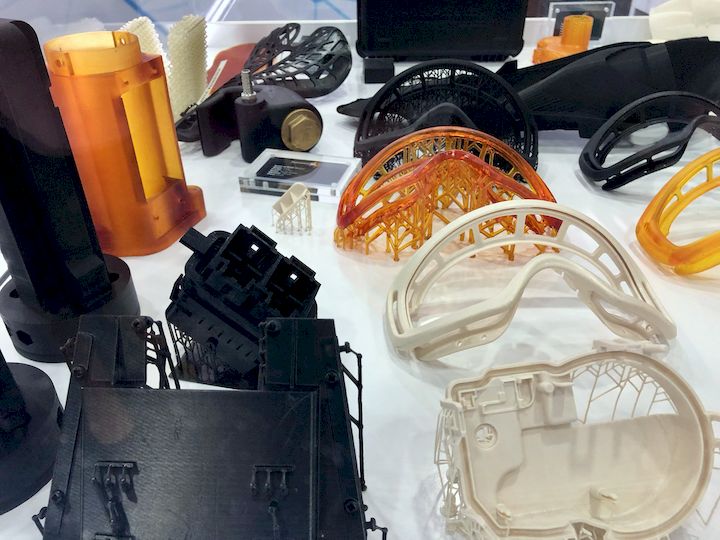![Industrial 3D prints made by Photocentric’s LC series of 3D printers [Source: Fabbaloo]](https://fabbaloo.com/wp-content/uploads/2020/05/image-asset_img_5eb094ca2eb6e.jpg)
Photocentric continues their journey into 3D printer manufacturing.
The UK-based company is best known as one of the few suppliers of photopolymer resin to the world. Their resins are sold under white label to countless 3D printer manufacturers and materials suppliers, where it is rebranded under various names and sold to clients.
But a few years ago the company decided to begin manufacturing the 3D printers themselves. When we saw their initial machines, they looked promising, although they seemed not particularly distinguished from the rest of the field. However, nowadays that seems to be changing with their release of several new machines and hardware that are quite different.
One of their key differentiating features is the use of “daylight resin”. This refers to the wavelength of light that triggers the polymerization (solidification). Most resin 3D printers use UV light wavelengths, typically 405nm. That’s why you see these 3D printers with transparent orange shrouds: that color filters out stray UV that would corrupt the print.
Photocentric Daylight Resin
Photocentric’s daylight resin allows them to use different light engines for their equipment. Their 460nm resin can be used with many conventional sources of light, and in particular, that means LCD screens.
These are commonly available as they are components of basically every laptop, TV or monitor on the planet. Photocentric is able to re-purpose them as light engines for their 3D printer line, and at relatively low cost.
The advantage is that rather than waiting for a laser to tediously trace the solid portions of each layer, Photocentric’s LCD approach allows an entire layer to be simultaneously illuminated with pixels from the LCD. Thus the printing is quite fast.
While they are able to tailor-make 3D printing solutions of sizes ranging from smartphone-sized LCD panels all the way up to huge “Big TV” sized monitor panels, they do offer a standard line of devices, named “Liquid Crystal”. Their recent machines, unlike the first devices they marketed, are targeted at manufacturing. They’re larger and equipped with features suitable for serial manufacturing.
Their current flagship 3D printer, the LC Magna, offers an enormous 510 x 280 x 350 mm build volume, substantially larger than most other desktop units that often have build volume dimensions under 100mm. The non-stick resin tank, combined with the all-at-once LCD printing approach yields a typical print speed of around 13.3mm per hour regardless of how many objects are being printed.
Production Efficiency With Photocentric 3D Printing
This is one key feature for manufacturing: if you leverage the wide build area, you can produce a lot of small objects in rapid time using this device. Let’s do some arithmetic.
Say your object is 20mm tall, and 40 x 40 mm across. On the LC Magna’s print bed you would be able to fit around 84 units. With that height, the job would complete in 90 minutes. That’s almost one unit per minute, pretty good throughput.
On the other hand, if you attempted to 3D print 84 objects on a resin device with a smaller area, say only 150 x 150 mm, you could fit only 9 units per job! Even at the same print speed of 13.3mm per hour, you would be producing items at about 10X less throughput than the huge LC Magna device.
I think Photocentric understands this concept quite deeply, as they have rushed to produce a follow on device, the Maximus, which will have a build volume of 520 x 510 x 800 mm. At that build volume, their unit production throughput will be that much higher, making the Maximus a very attractive device for industry, even if it is to cost around US$80K when released later this year.
Via Photocentric











A research thesis details the incredibly complex world of volumetric 3D printing. We review the highlights.